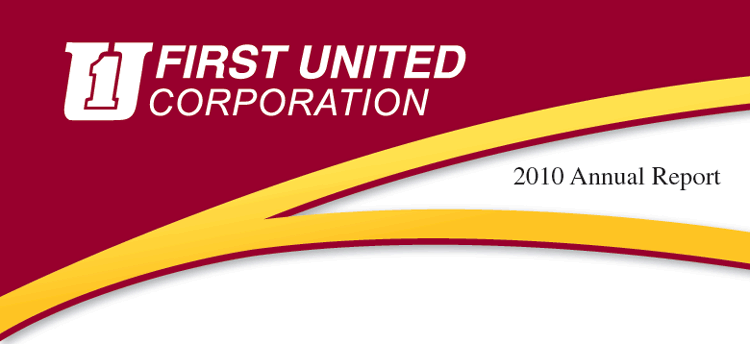 |
|
Letter to the Shareholders
The current recession is rivaled only by the Great Depression in terms of depth, severity and duration. After three years, the economy remains very much mixed. Statistically, those elements that signal recession and recovery clearly indicate that the recession is over. Funny, it does not feel that way. We still have customers struggling in their businesses and personal financial lives. Economists indicate that the recovery will be slow and sputtering. We have, nevertheless, seen signs within our markets that are more encouraging. People are beginning to spend and invest, although very slowly, and very cautiously. Several small businesses have worked their way back from the brink. This has been reflected by improving trends within our loan portfolio. As the economy’s skies slowly clear, there is much damage in the wake of the storm that will take a while to repair. This is evident in the amount of loans and investments that are rated as substandard. Your Company has been aggressive in recognizing credit issues within both our loan portfolio and our investment portfolio. This recognition impels us to recognize potential future losses now and to accrue charges against earnings and capital. Further, we have moved decisively to increase our loan loss reserve to buffer the Company from future erosion. While we have seen recent improvement in our asset quality, our loan loss reserve remains at a historically high level. As such, we will continue to work diligently to reduce the amount of adversely classified assets in the Company. This will take several forms, including working closely with customers to restructure troubled loans, proactively taking charges on loans where total recovery is unlikely, maintaining a high loan loss reserve and disposing of some assets. I am from time to time asked: “What happened?” I shared our recent history at last year’s meeting, but it bears repeating. As we evaluated our strategic opportunities in 2006 and 2007, we recognized that we had made investments into new vibrant markets – notably Morgantown and Martinsburg, WV and Frederick and Hagerstown, MD. We believed that these investments would need a few years before they hit their stride. We would need to take steps to project ourselves into these markets. Until then, we knew that they would represent a drag on our earnings. The decision was made that would leverage the Company over the course of the next few years in order to continue delivering the rate of earnings growth which had become the norm in the Company. To accomplish this, investments would be made into institutional-grade trust preferred securities and select loan participations. To an extent, these |